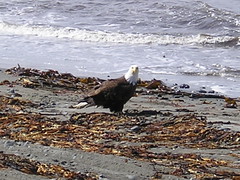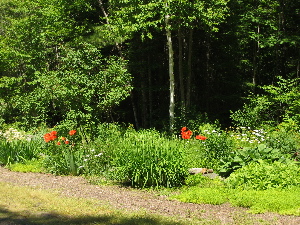I'm getting letters every day about those danged termites! People appear to be a bit panic'd about them. Either that or they have labeled them "a myth"! Don't pick EITHER of those avenues.
These Formosan Termites are definitely a problem in the south. But let's look carefully at their ability to move to our New England area. We don't have Fire Ants, and more than likely we'll never see these Formosan Termites either.
So, listen up!These termites are sub-terranian, which means they make their nests
IN THE GROUND, rarely in trees. That's the first thing we should consider, even though it's a POSSIBLITY that they might occasionally nest in trees.
Then they need
warmth! They surely don't get that here!
The other thing is that they need
moisture. Mulch dries out very quickly, so they will head for the ground, where they couldn't live long. Or into your house IF they could travel there from the southern climes of our country.
The first thing that happens to those downed trees is that they are chopped up. That's a pretty effective way to rid ourselves of creatures, large and small. It destroys the nest, mixes up the inhabitants, and spits them out into a very drying mulch! No one wants that mulch wet, because it will spontaneously combust, so the object is to keep it as
dry as possible.
Now it gets bagged! Loaded on trucks, and shipped all over (according to the theory). But, if it has been shipped to our stores, where have the trucks gone? Through the intense cold of our winter climate. No water is provided. They have been shredded, etc. Then they get stored outside because there's no reason to keep mulch warm. Why use up warehouse space?
I could go on and on. Sure there's a really
OUTSIDE chance that a few termites would make it to your property, but we've all been taught not to have our mulch right up against our houses anyway. So use the mulch in the garden, don't have it piled against the house (where there's the
OUTSIDE chance that a stray termite might make it into the house and stay warm.)
SO, RELAX GARDENERS! DON'T BE AFRAID OF THE INVASION OF THE FORMOSAN TERMITES!! IT AIN'T GONNA' HAPPEN!!!!!!





